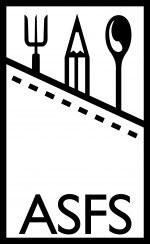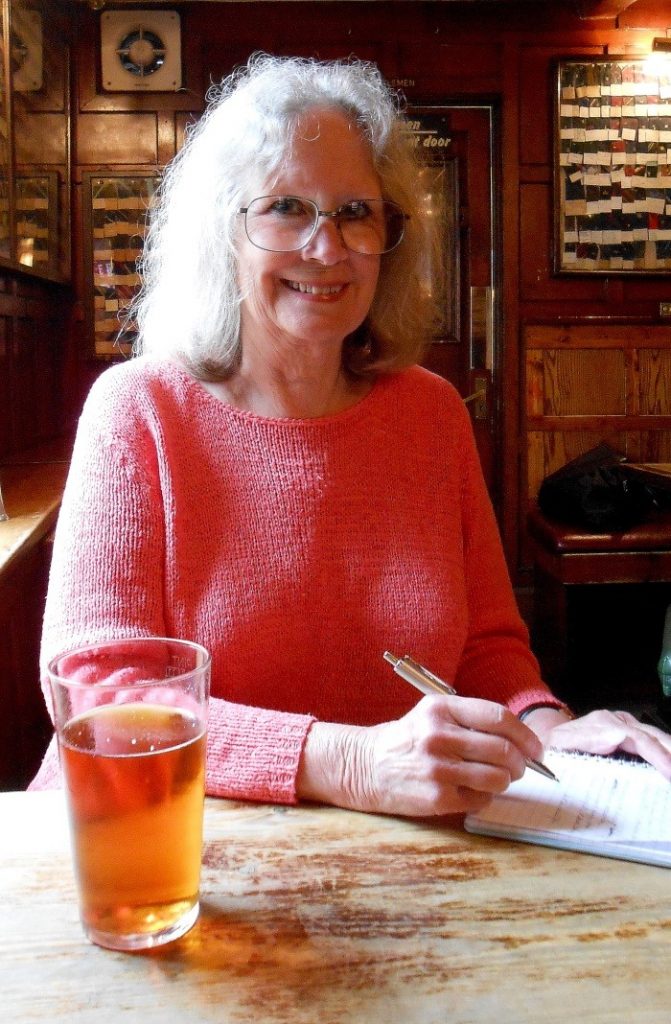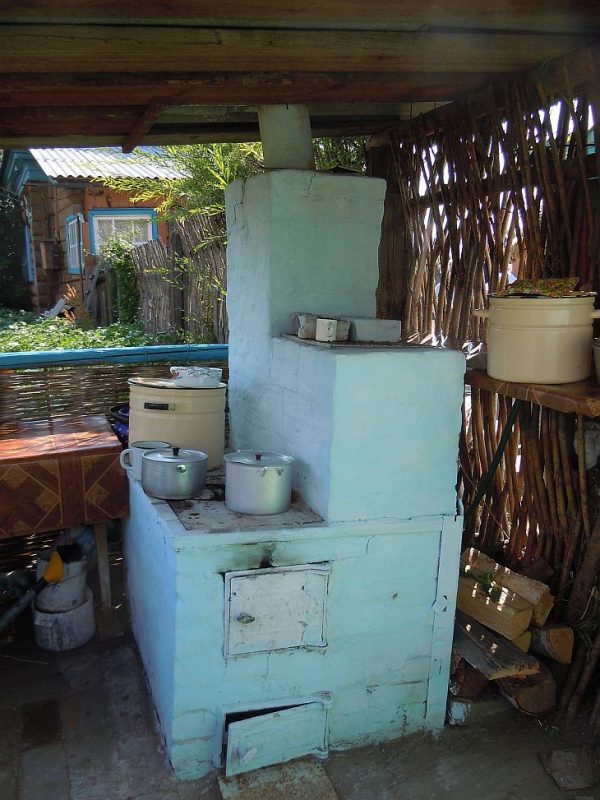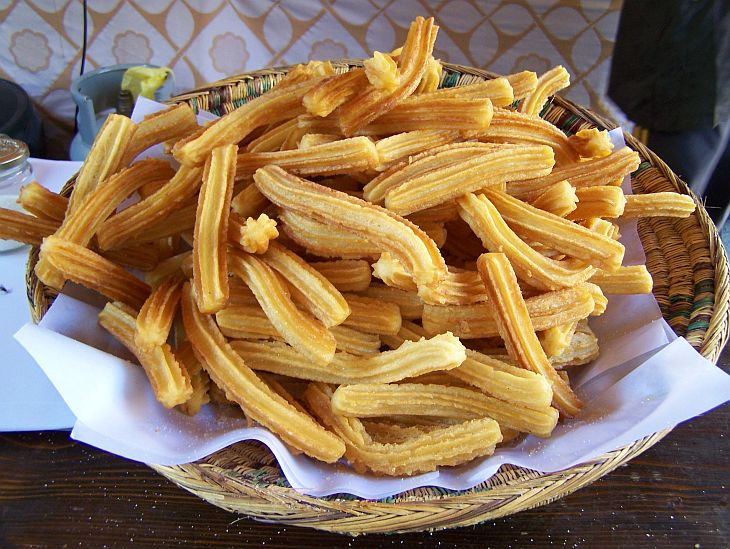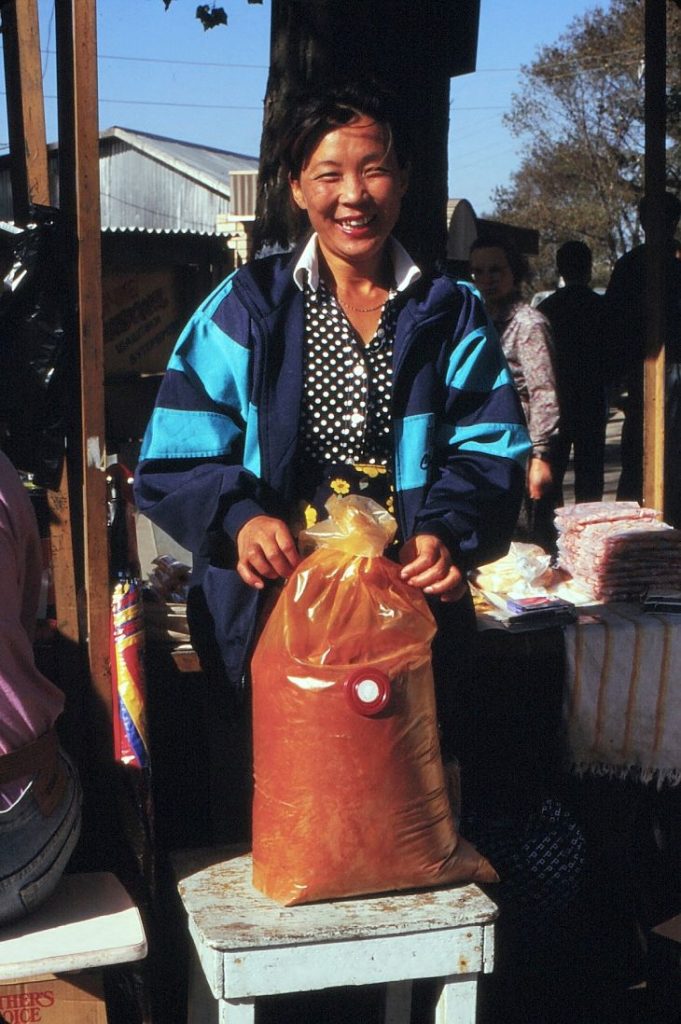November, 2022
How long have you been involved in ASFS, and what do you appreciate about it?
Around 2006 a colleague forwarded to me a discussion thread on the ASFS listserv, about a topic he knew I was interested in. I signed up for the free listserv and later became a member of ASFS. I found it to be a good resource for connecting with knowledgeable people who had culinary interests similar to mine; answering research questions posed by me and others; sharing information on a wide variety of food-related subjects; and enlightening me about aspects of food that I was unaware of. When I was developing Food on the Move, my latest book (as editor), and searching for qualified people to write individual chapters, I found two of them through ASFS.
But I do miss the more lively discussions on the formerly free listserv, where chefs, non-academics, and interested amateurs also had their say—even if some of those threads occasionally led down rabbit holes.
A lot of your scholarship and writing revolves around Russia, and Siberia in particular. How did you get interested in this geographic area?
As a kid growing up in a small Texas town during the dark days of the Cold War, I became interested in international politics, and particularly Russia, around the age of ten. I don’t have Russian ancestry, and I’d certainly never met any Russians before. But I had a distant cousin who traveled to the Soviet Union several times on business during the Khrushchev era and came back with stories that sounded like the script for a black-and-white spy movie. To me, the Soviet Union seemed like the most foreign, secretive, and interesting place on Earth. And it was the farthest you could get, geographically and otherwise, from the little town where I lived.
Studying Russian culture, on my own, became an outlet for my adolescent intellectual energy. I read Russian novels and poetry (in English), devoured books on Russian history, listened to Russian classical and folk music on vinyl LPs, and watched every news report and documentary about the Soviet Union on TV. At the University of Texas in Austin, I majored in Soviet and East European Studies, and at the University of Michigan in Ann Arbor, I specialized in U.S.-Soviet Strategic Studies. I also did internships at the Pentagon and the Soviet branch of the United States Information Agency (USIA). Later, working for USIA, I adapted scholarly books on arms control, international politics, and political theory for distribution to readers of English as a second language.
After earning a second master’s degree in Film Production, I was offered a dual appointment in Film and Political Science with the University of Maryland’s overseas program. For the next eighteen years I taught in six countries of Europe and Asia—and also developed a parallel career as a cookbook author and food writer. I’m probably the only food writer in America who has also written a master’s thesis on anti-ballistic missiles.
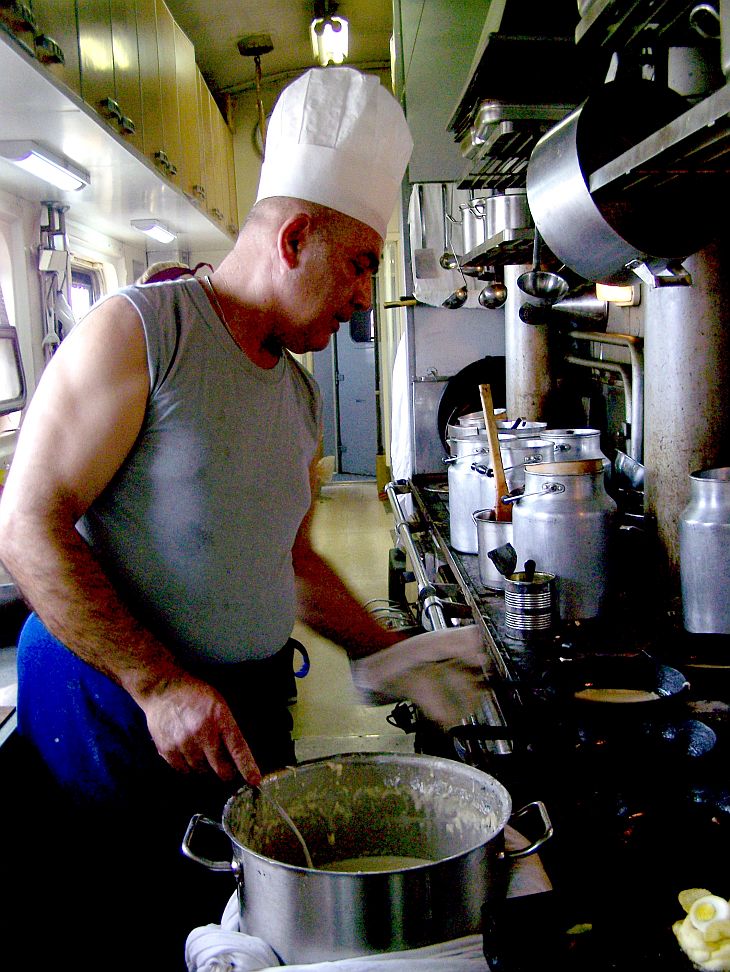
In 1993, shortly after the collapse of the Soviet Union, I was appointed as a professor and on-site administrator for a new program established by the University of Maryland at two Russian universities, in Siberia and the Russian Far East. That was a childhood dream come true! Despite the hardships of daily life in Russia during the mid-1990s, I loved living in Siberia (especially during the winter), traveling on the Trans-Siberian Railroad (which became my “commuter train” there), and eating in the kitchens of my Russian friends and colleagues. And I had the opportunity to observe, firsthand, the problems of a country trying to transition from a command economy to a market-based system. Those experiences provided the material for the two books I wrote about Russia, and later led to my working for National Geographic Expeditions and Smithsonian Journeys as a lecturer on their Trans-Siberian Railroad tours.
How did you get started with your career as a food writer?
I didn’t set out to become a food writer. But after several years of eating my way around Europe and Asia, collecting cookbooks from around the world, and shopping at local markets, I thought it would be interesting to write about food. I was living in Germany at the time and sent a letter to the managing editor of Stars and Stripes, the U.S. military newspaper in Europe, saying that the paper needed a weekly food column, offering to write it myself, and including three sample stories, with recipes. Two weeks later I had the job. In seven years with Stripes, I wrote 350 food articles, starting at 500 words apiece and soon expanding to 2,000 words every week, with recipes that I researched, developed, and tested myself. I later branched out to write for other publications, as well as writing and editing books for publishers in the U.S. and Europe.
I’m often asked if I majored in Home Economics in college, as if that were a prerequisite for becoming a food writer. But I think skills are transferable. The research skills I learned as a student of political science, and the storytelling techniques I learned in film school, are equally applicable to researching the history and context of an ingredient or dish, then writing about it in a way that makes the story interesting and understandable to a wide audience. A history professor of mine in graduate school told me that I could be a good writer if I learned to avoid academic jargon. I’ve kept that advice in mind ever since.
You also have a cookbook about the regional cuisines of Spain. How is fieldwork different between Spain and Siberia? How do you prepare to do fieldwork in such different cultural contexts?
Some aspects of fieldwork are the same: interviewing people, doing research in libraries, collecting recipes, documenting foods and their physical context with photographs, eating on-site the dishes you plan to write about. Other methods of fieldwork are specific to the country or locality you’re focusing on.
For my cookbook about the regional cuisines of Spain, I traveled through all 47 provinces on the Spanish mainland (and through many of them several times), eating at little family-run restaurants in towns large and small, shopping at local food markets, and taking copious notes along the way. I also bought regional cookbooks everywhere I went and visited museums with collections of agricultural implements and exhibitions about food processing. I lived for several months on the outskirts of Madrid and later in a small mountain village in Andalucía, so I had the opportunity to experience both urban and rural cooking.
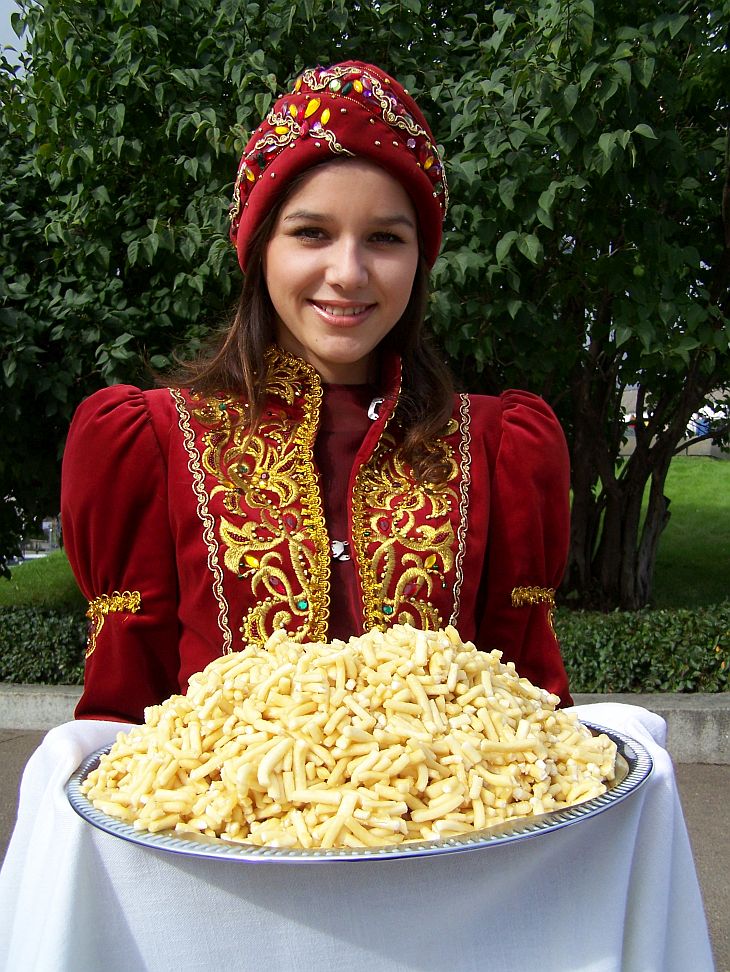
In Siberia, travel to remote areas was more difficult than in Spain, although I did spend time in several small villages, and work on expedition ships took me to the outback of Russia’s far north. But most of my culinary experiences were in urban areas, eating in the home kitchens of Russian colleagues and friends who shared their family recipes with me. On trips to more remote regions, I took notes on, and documented photographically, the foods available there. Ever since college, I had also been collecting Russian cookbooks, so I already had a large personal library for research.
Even though the fieldwork situations were different in Spain and Siberia, in both places it was essential to know enough of the language to do on-site research and to read primary sources about the foods of those places.
In 1984 you interviewed Julia Child – could you tell us about this experience?
A year after I became the food writer for Stars and Stripes, the newspaper sent me from my home base in Munich to interview Julia Child at La Varenne Cooking School in Paris. I was both elated and apprehensive. The only people I had ever interviewed before were a handful of academics for a project in graduate school. Now I was being sent to interview the great Julia Child.
I had only a short time to prepare for the interview. I owned only two of her cookbooks, and there were few resources available to me in Munich in the mid-1980s—no Internet, no Amazon.com. So my husband, Tom, and I pooled our memories of watching her cooking shows on TV in the 1970s, and my editor at the newspaper came up with a few clichéd questions to ask. But I was really flying blind into that meeting with a culinary legend.
Julia was late for the interview. Finally she came striding through the kitchen at La Varenne, and her assistant ushered all of us into a small room barely large enough for Julia, a table, Tom, and me. I introduced myself as the food writer for Stars and Stripes and explained that Tom would be photographing the interview. But before I could pull out my tape recorder and handwritten list of questions, Julia began asking about my job at Stars and Stripes. Hesitantly I replied that even though I was the newspaper’s food columnist, my real job, my day job, was teaching for the University of Maryland in Germany.
Julia was fascinated that the university had programs abroad and that my husband, the photographer, was actually an economics professor there. She wanted to know which countries we had worked in and what courses we taught. The world grew even smaller when she discovered that Tom and I, like her husband Paul, had worked for the U. S. Information Agency. Soon we were all swapping stories about food markets in Greece, cooking classes in Okinawa, and USIA projects in Washington, D.C., as if we were dinner guests at a diplomat’s table, not strangers in a stuffy little anteroom at La Varenne.
The interview had been scheduled for a strict 30-minute time slot. But when her assistant knocked on the door and said that our 30 minutes were up, Julia replied, in the nicest tone of voice, that we were not finished and to please go away. By that time we were discussing Barbara Tuchman’s book, Stilwell and the American Experience in China, 1911-1945, which all three of us had just finished reading. So for the next half hour we continued our “dinner party talk,” about General Joseph Stilwell, General Douglas MacArthur, Julia’s experiences with the U.S. Office of Strategic Services in China during World War II, and her pithy observations on politics and history.
Thirty minutes later, Julia shooed her assistant away again, and I finally tried to ask her the formal questions on my list. That changed the tone of the interview for a few minutes, but soon Julia was back on some of her high horses again, talking about the quality of French home cooking (which didn’t impress her) and the availability of fresh ingredients in different parts of the world.
Ninety minutes into that interview, her frantic assistant told Julia that she had less than half an hour to get to a reception in her honor, at another location in Paris. “Do you mind walking?” Julia asked us, as she pulled her considerable self up to full height in that little room. “Of course not,” we replied, game for whatever she had in mind. So I conducted the rest of that interview on the streets of Paris, against the background noise of rush-hour traffic, as Julia loped along the sidewalk, answering my questions in her unmistakable voice, while Tom tried to snap pictures from behind.
Afterward I fretted that I didn’t have enough material from that two-hour casual conversation to edit into a formal interview. But eventually I managed to put it together in a coherent way—and Julia thanked me for it later. That interview was first published in Stars and Stripes in 1984, reprinted in Gastronomica‘s special Julia Child issue in 2005, and most recently published again in Julia Child: The Last Interview and Other Conversations (2019).
You’re currently editing a cookbook about Central European desserts – how does one edit a cookbook?
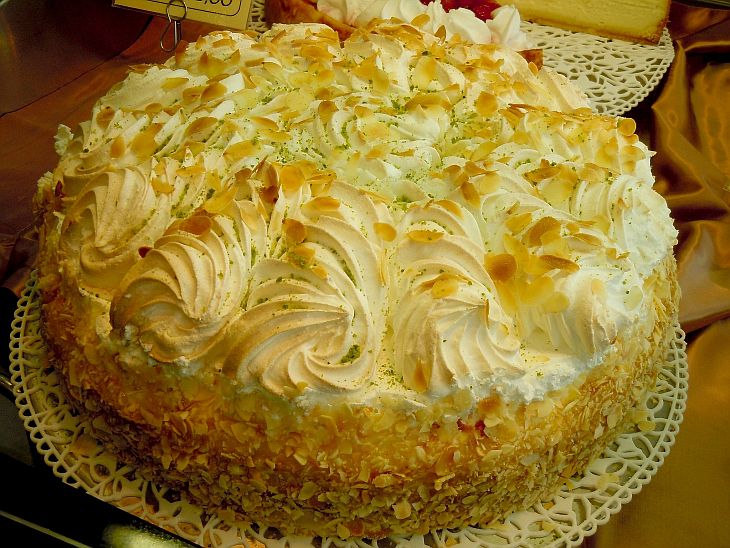
Each cookbook requires different editing skills. When editing the English parts of dual-language German-English cookbooks, for a German publisher, I had to know enough German to check whether the English translation was correct—and, in many cases, change the English phrasing in the translation. I also had to make the conversions from metric to American measurements. And I had to query the German author about ingredients and techniques that would not be clear to American readers (e.g., “Pickle a pig’s head.”)
When editing Food on the Move, for a publisher in England, I first had to find authors for each chapter and provide them guidance for the kind of information required for the book. I also had to fact-check each author’s text, locate many of the photographs and other materials for the illustrations, and make sure that all the British and American measurements were correct, because the book was published with both systems of measurement.
The Central European cookbook I’m now editing poses special challenges. The author of the manuscript passed away, but her family wanted the project to continue, so they hired me to get the manuscript in shape for a final submission to the publisher. Since I could not query the author about ingredients, techniques, and her personal stories in the book, I’ve had to rely on asking her family to respond to my questions, check facts known only to them, and in some cases retest the recipes. I’m also writing sidebars to put some of the recipes into context—and working with the family to obtain historical photographs that illustrate the personal story on which the book is based. My background in Central and Eastern European history has been especially useful on this project.
You have been the editor of Chile Pepper magazine, and are currently the food columnist for German Life magazine (USA). Do you have suggestions for those of us who might be interested in juggling these different types of writing styles?
Both editing a food magazine and writing a food column require (or should require) that you already know the subject well. But magazine editing is a management job, whereas article writing requires different skills.
As a magazine editor, I had to select the theme of each issue, find authors for each article, work with the copy editor on fact-checking, and keep the publisher happy by staying within budget. Before becoming editor of Chile Pepper, I had written several food articles for the magazine and eventually had my own barbecue column there, too. So I already knew the magazine’s style and content very well.
As the food columnist for German Life magazine, I can choose my own topics to write about (subject to the editor’s green light). Then I research them thoroughly and write them in my own style. I also have to provide all the photographs for my articles. It helps that I lived in Germany for 15 years and, before the Covid pandemic, returned there every year to gather new material for food stories.
Each publication is different, so it’s hard to generalize. There are certainly stylistic differences between a feature article and a regular column that appears in every issue. Some magazine editors give their writers full rein, with only minimal editing, whereas others re-write the stories so much that the authors don’t even recognize their own work. Count yourself lucky if you write for the former, not the latter.
What is your favorite Siberian dish?
That’s a hard one, because the food is so good there! I’m partial to pel’meni, the so-called “national dish of Siberia”—boiled dumplings made of thin dough stuffed with fish, meat, vegetables, or mushrooms. My favorite stuffing is blueberries-and-venison. And several times a week I’d be happy to eat “Salmon in a Coat” from the Russian Far East—a big fillet of wild-caught salmon, seasoned with soy sauce and baked under a thick mantle of garlicky mayonnaise. Recipes for both dishes are in my recent Siberian memoir-cookbook, T-Bone Whacks and Caviar Snacks.
